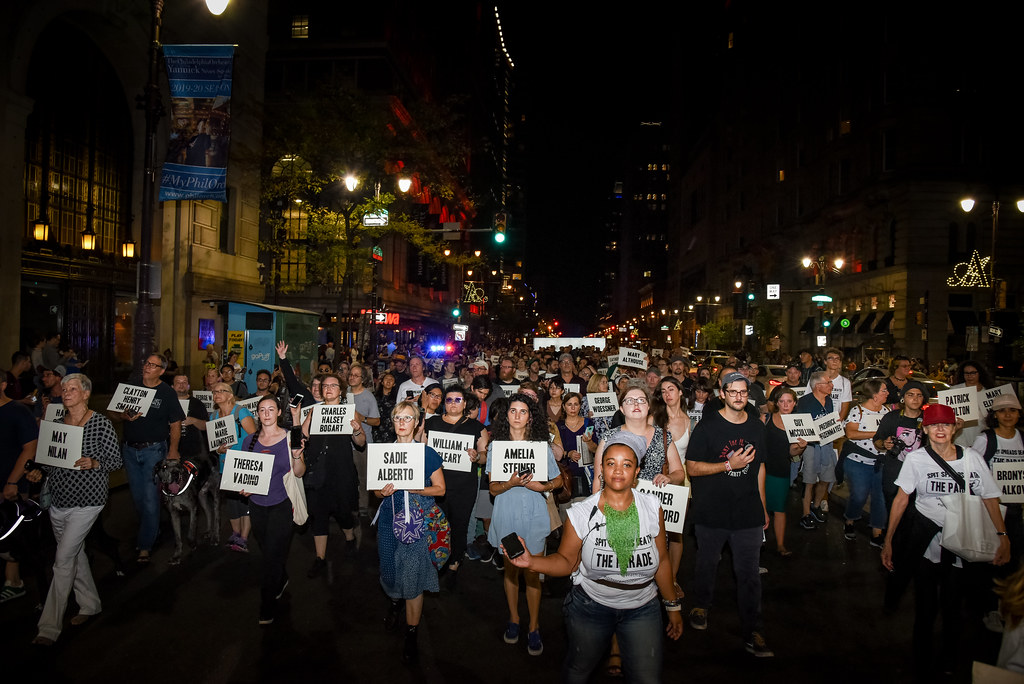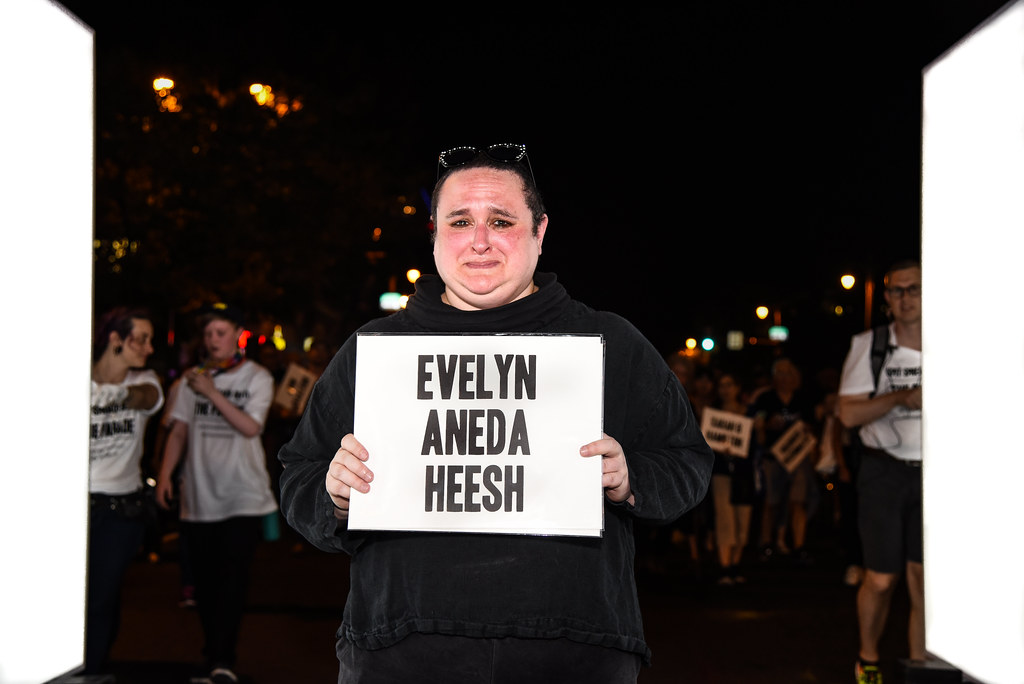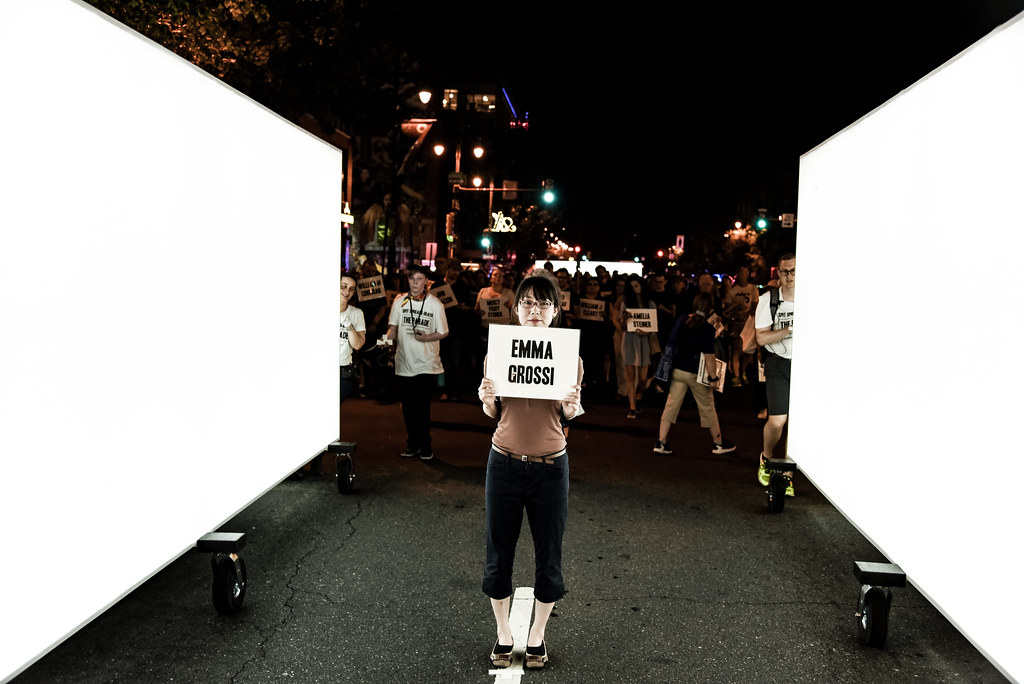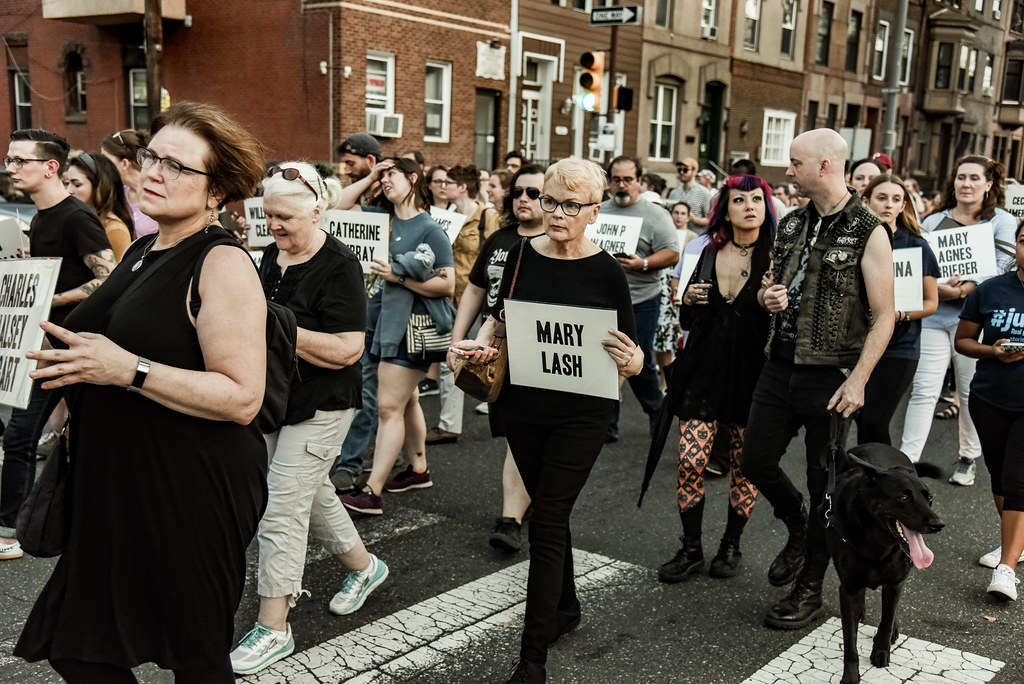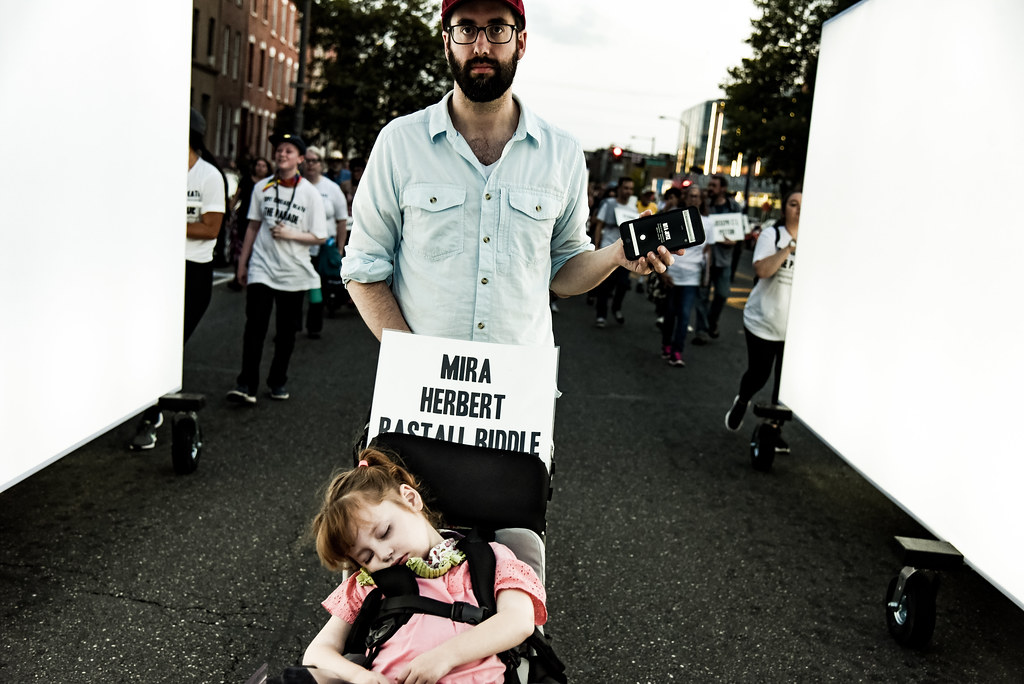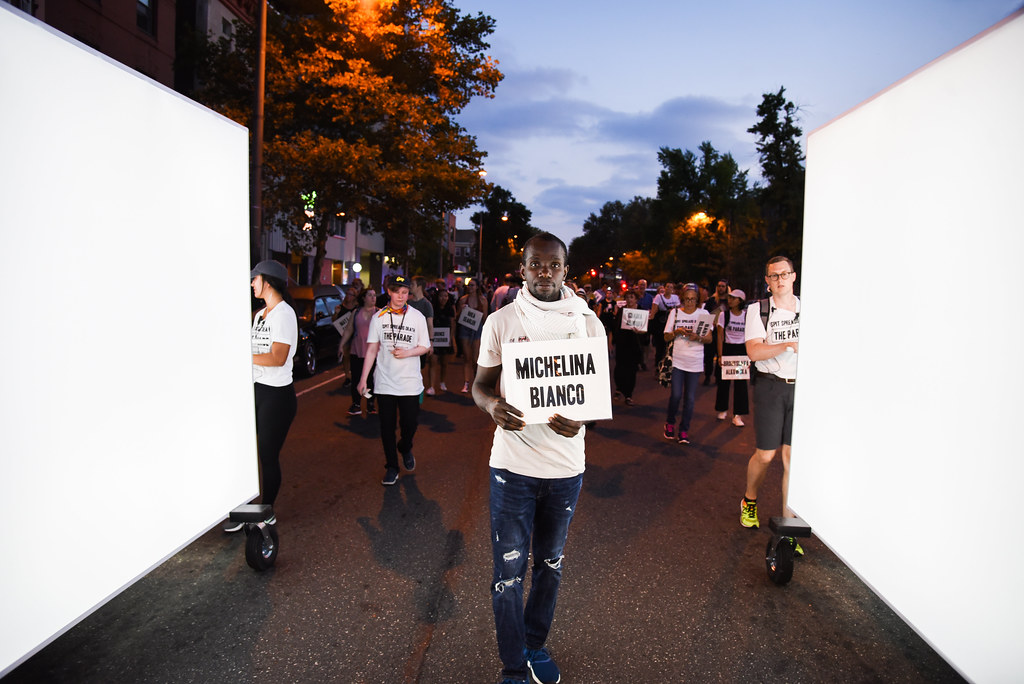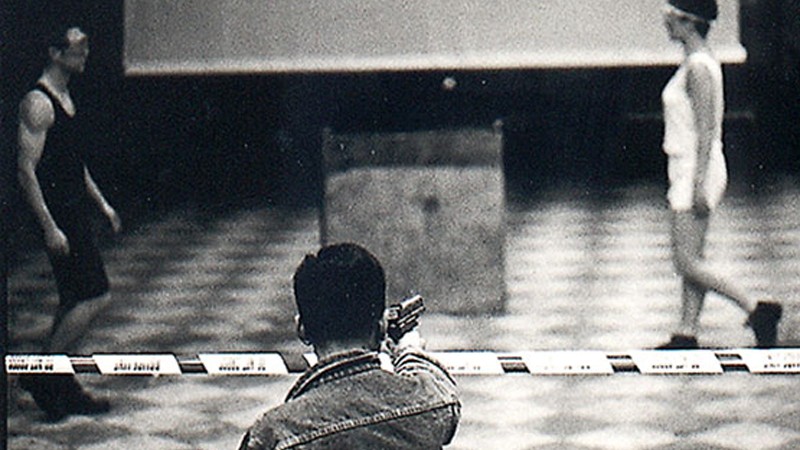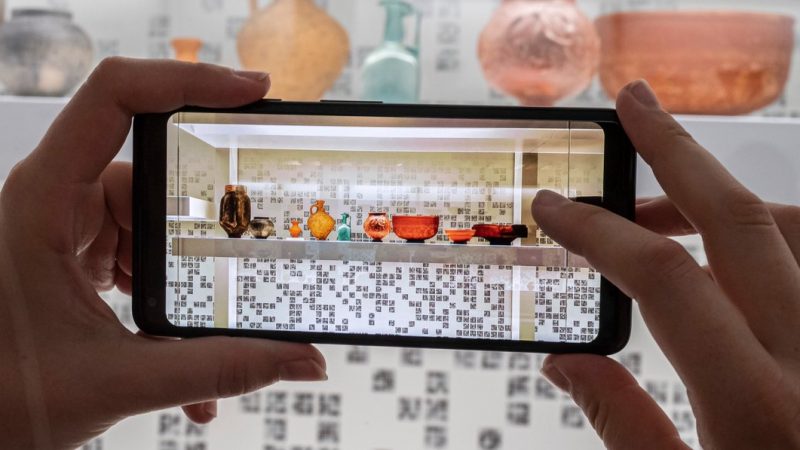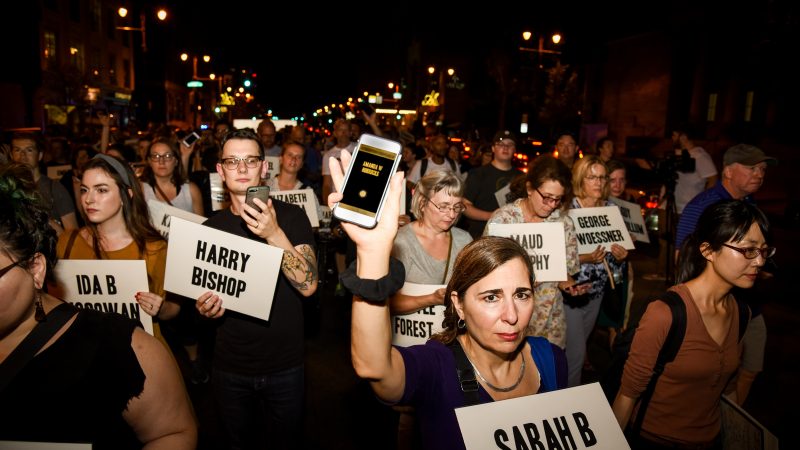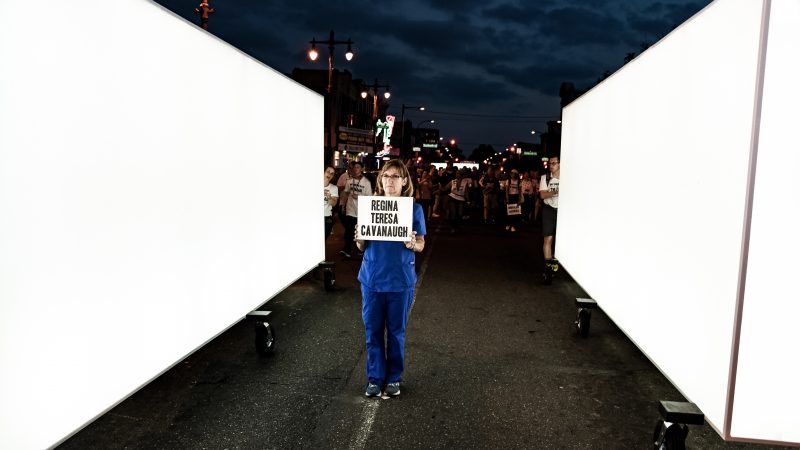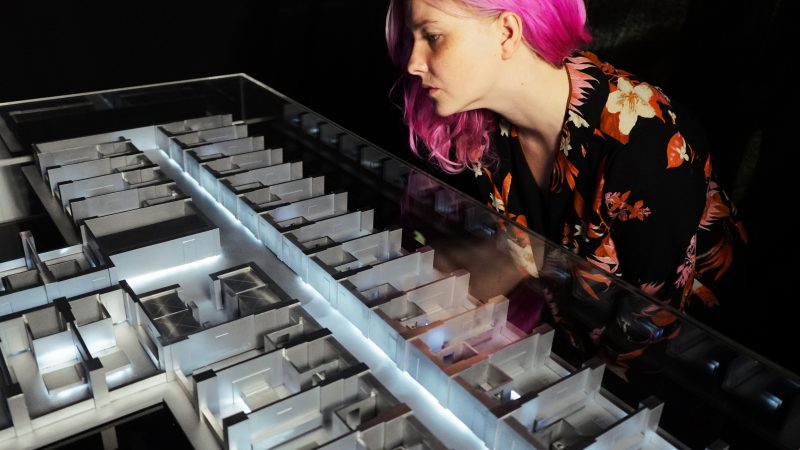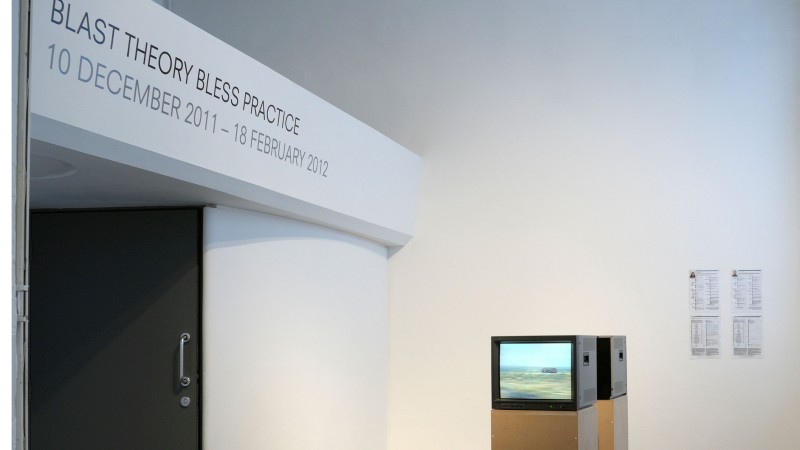On 28 September 2019, an interactive parade of light and sound remembered the individuals who lost their lives and the health workers who put their own lives on the line in times of crisis. Hundreds of citizens from across the city - and beyond - each chose one person to honour who died on the deadliest day: 12 October 1918. They paraded with the death certificate of that person. And one by one, took a moment to stop walking as the parade flowed past them. For a few moments, they stood alone between two of the large sculptures in a corridor of blinding white light.

When the Liberty Loan Parade began on 28 September 1918, over 200,000 people crowded along Broad Street to cheer a line of marchers stretching over two miles. It was to become an iconic moment in the history of Philadelphia and part of the global story of the deadliest flu pandemic the world has ever seen.
Within 72 hours every bed in Philadelphia’s 31 hospitals was filled. Over the next six weeks, a quarter of the population fell ill and more than 12,000 people died. The disease’s rapid spread paralysed the city and traumatised its inhabitants. When the pandemic finally ended in early 1919, Philadelphia had lost over 20,000 people. Its death rate was the highest among major American cities.
Flu can cause inflammation of the optic nerve and many survivors of the 1918-19 flu pandemic reported how washed out the world appeared to them, as if it were drained of colour. In her story Pale Horse, Pale Rider Katherine Anne Porter writes of “the colourless sunlight slanting on the snow, under a sky drained of its blue”. The pandemic foreshadowed the rise of the modernist movement with its emphasis on white walls, open spaces and large windows; one of the first landmarks in modernist architecture is Alvar Aalto’s Paimio sanatorium in 1929. The colour white invokes purity, sterility and cleanliness. Ghosts traditionally wear white and many religions confer special authority on white garments. White is the colour of heaven, forgetting and oblivion. Banks of bright lights were at the heart of the 2019 parade.
Oscar nominated composer David Lang created a score called Protect Yourself From Infection sung by Philadelphia Grammy-winning choir The Crossing. This was played through the phones of the paraders as they walked from the south of the city where the flu arrived at the Navy Yard in 1918 up Broad Street to City Hall where the fateful decision was made to allow the Liberty Loan Parade to go ahead.
A short film was made of the parade and this is on show at the Mütter Museum until 2024.
Artists’ Note
Blast Theory, 2019
Like our project The Thing I’ll Be Doing For The Rest Of My Life in Nagoya, the parade activated the public to create a highly visible form of commemoration. Our work on this project also draws on our residency at the World Health Organization in Geneva in 2018.
We were lucky enough to work with curator Trevor Smith from the Peabody Essex Museum on this project. We are grateful for the generosity and warmth with which we were welcomed to Philadelphia, especially by Spiral Q and SEAMAAC.
Spits Spreads Death: The Parade was created by Blast Theory and commissioned by the Mütter Museum of The College of Physicians of Philadelphia.
Major support for Spit Spreads Death was provided by The Pew Center for Arts & Heritage and the Institute for Museum and Library Services, with additional support from the Groff Family Memorial Trust and the Pennsylvania Historical and Museum Commission, a state agency funded by the commonwealth of Pennsylvania.
